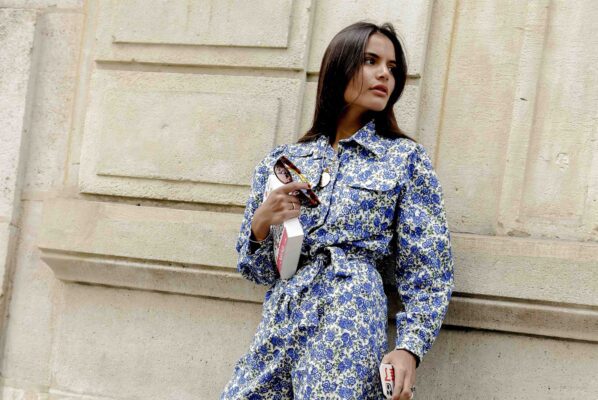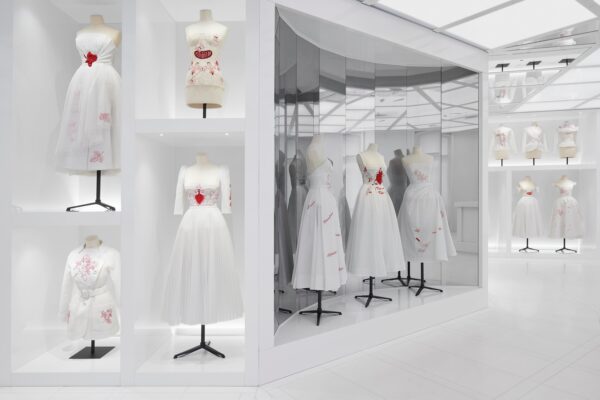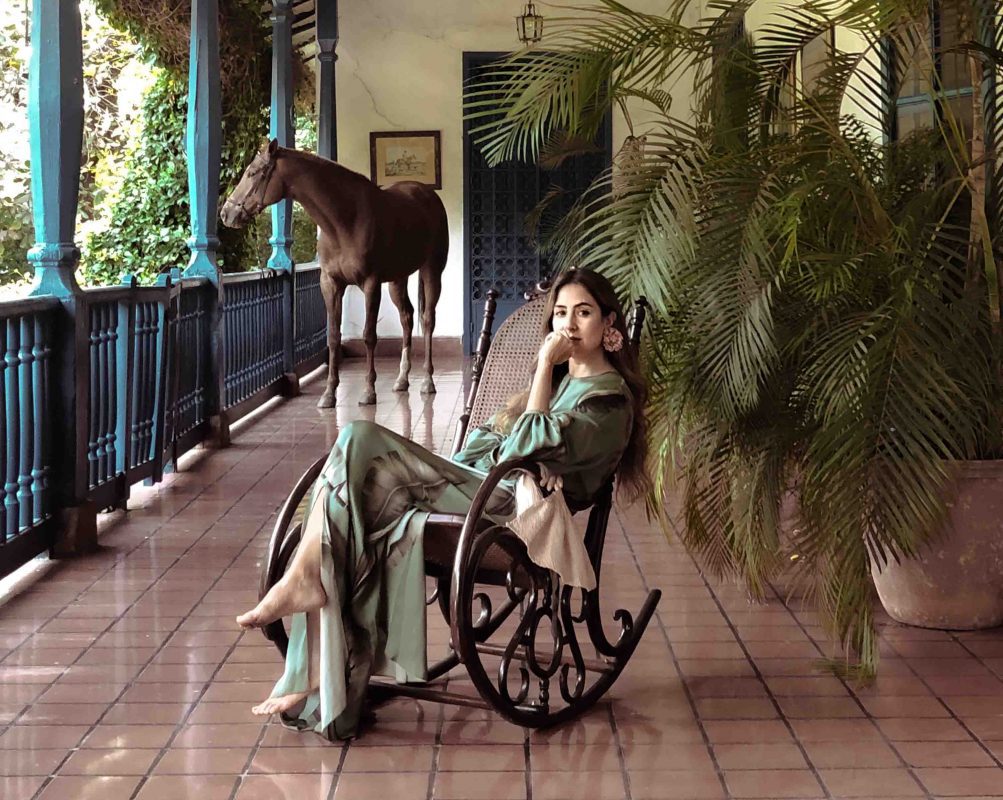
A COFFEE WITH
JOHANNA ORTIZ: “LIFE IN COLOMBIA IS WHAT FUELS MY CREATIVITY”
Name: Johanna Ortiz
Profession: Fashion Designer
Birthplace: Cali, Colombia
Zodiac Sign: Libra
Instagram: @johannaortizofficial
LATINNESS: We’re already quite familiar with your success story, which is why, today, we’d like to focus on your work and life behind the scenes. Let’s start with Cali, where you are based. We’ve read that many people are often surprised to discover that your brand is 100% made in Colombia…
JOHANNA: When people don’t understand that I’m not based in New York and they ask, ‘You come to New York how often?’ I think they don’t really understand how we live as Latins, our family life, being together, being a present mom, how we all are. We travel, but there’s this commitment of returning on weekends to be with our family. I believe in that idea of living somewhat of a normal life. I love seeing the people I grew up with, our family we’ve created, and having my mom nearby, and having César’s family nearby, also. And having our sons grow up with this family ambiance, I think it’s really important. It was never a question for me, this idea that ‘As soon as I give that step, I’ll move to New York or I’ll live in Miami to be closer.’ It never crossed my mind.
For me, living in Colombia is what fuels my creativity; living here and walking the streets, inspires me, although they might not be the beautiful streets one imagines from a city that inspires, such as Paris. Going out and seeing people on the streets inspires me. Cali has a significant cultural mix, because people from all over Colombia come to Cali, it’s multiethnic. This multiethnicity also gives you, culturally-speaking, inspiration. I think that the collections created here, from Cali, are going to have that essence. The moment I leave and live somewhere else, they’re going to pick up another essence, at least that’s what I think. Which is why, for me, being in Colombia, and above all, in my city, has been super important.
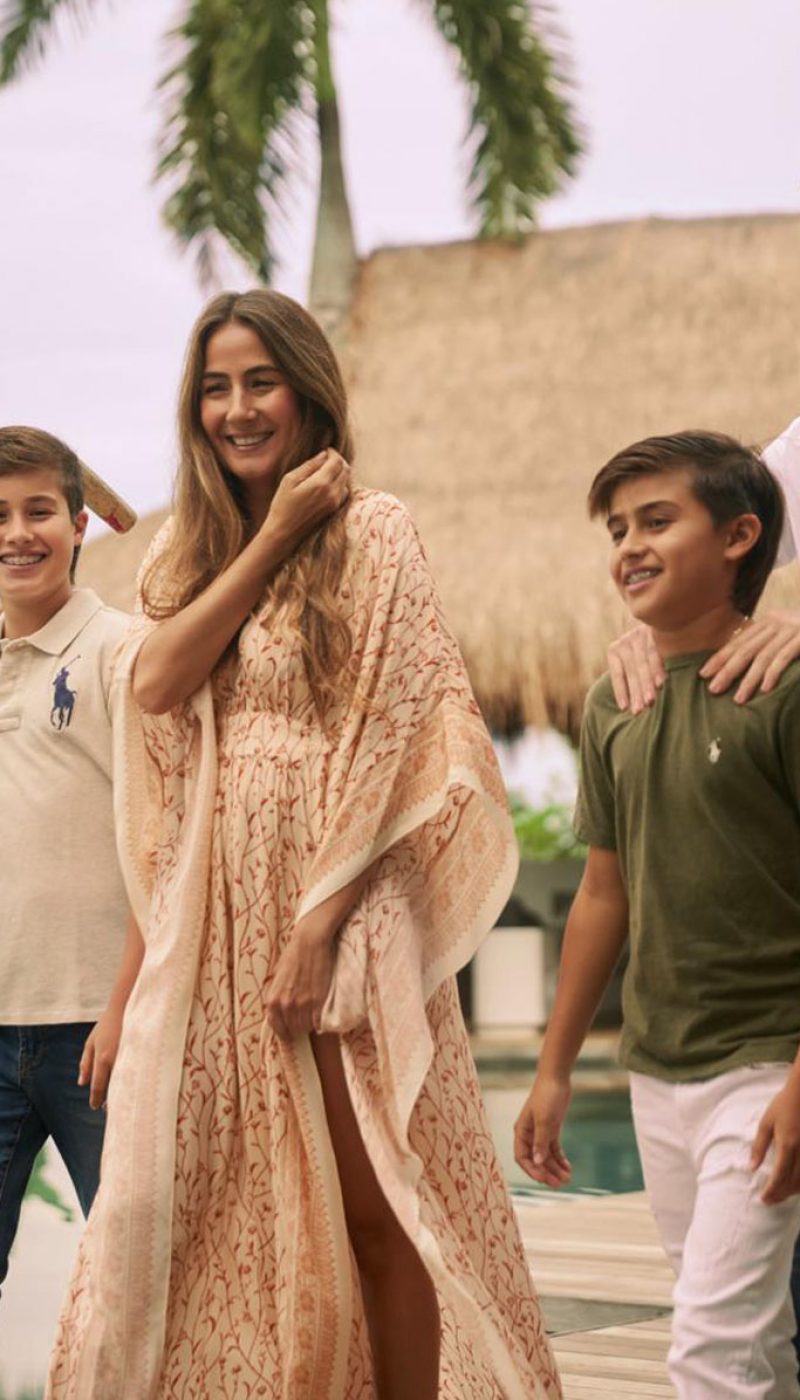
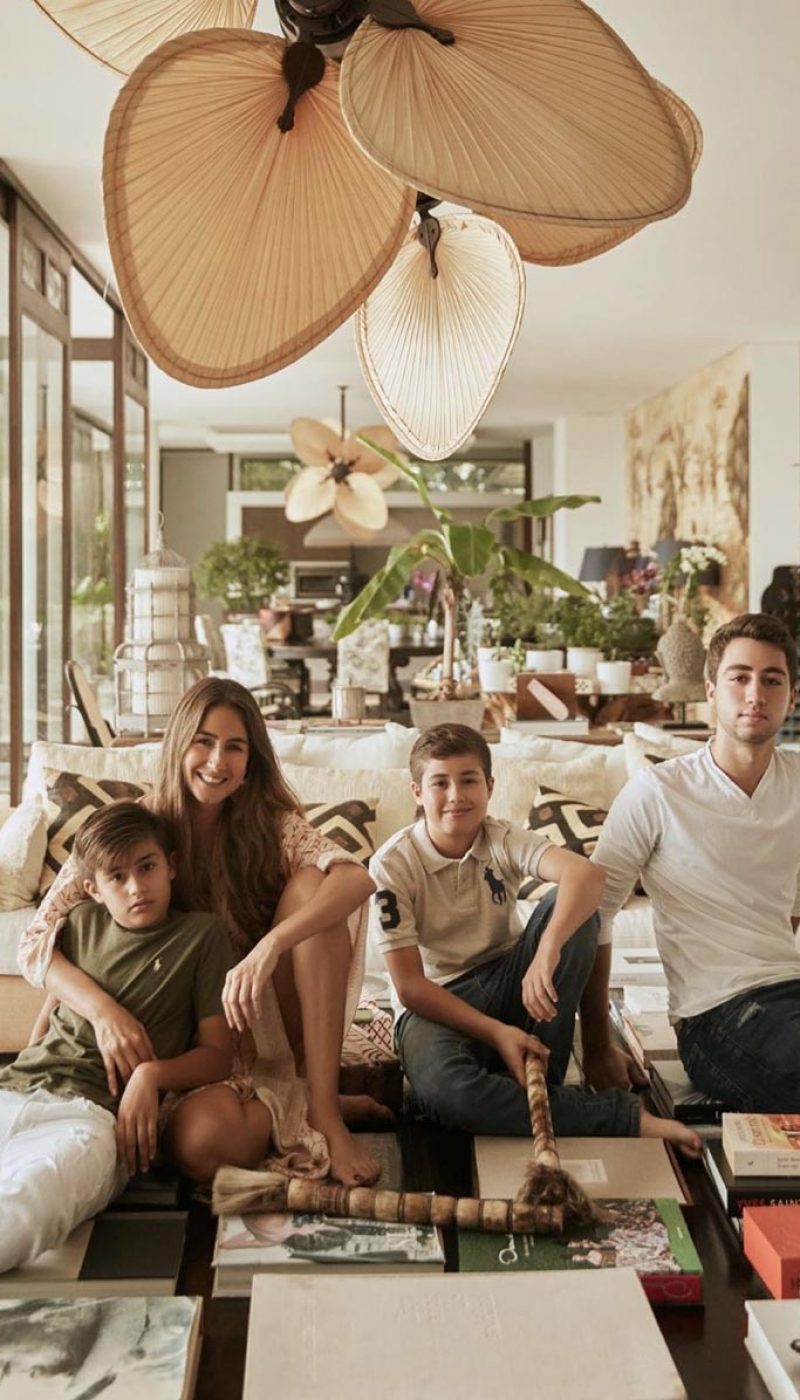
LATINNESS: Perhaps you weren’t the first designer to create a brand in Colombia, but thanks to your success, you’ve proven that it’s possible to have a globally recognized luxury brand made 100% locally. You’ve inspired and fueled the dreams of many designers, not only from Colombia, but also the region. Did you ever imagine your work would have this repercussion?
JOHANNA: I think things always happen at the right moment, and I had the luck and good timing at the moment to create a collection, and I think it’s when all these things align- you have a creative light, but at the same time, a momentum of people seeking precisely what you are creating. It’s here where the best comes to light. That, whatever Latin American vibe chic, which supposedly is how my brand was known abroad, I think we all had it. I’ve always said, we were all more inspired in looking at international runways, and we would forget our culture, our things and everything that was happening here, of all these women. When I see on Sundays how people go out for día de domingo, and in small cities it’s to dominguear, it’s how they fix themselves up, and the women, how they love to get dressed and wear color and all of that, we’ve all seen it, and we’ve all had it. What happened is that, I think no one had capitalized it. The minute I really saw it, it was like ‘Oh wow, I love this’.
As Latins, we love to fix ourselves up to go to lunch, but also to the office, to be dressed up. Maybe that wasn’t so clear before. And if I’m conscious of it? I was in an interview with Vogue, with Karla, and she had mentioned that: ‘Johanna Ortiz, who opened the doors for Latin American and Colombian designers,’ and all of that, and well, I really feel like we had all the talent, it was already all here. I was the one who had that stroke of luck, and maybe was the first to enter, but the talent was there. It’s a very talented region, and Colombia has distinguished itself, above all, for having really good designers for a while now.
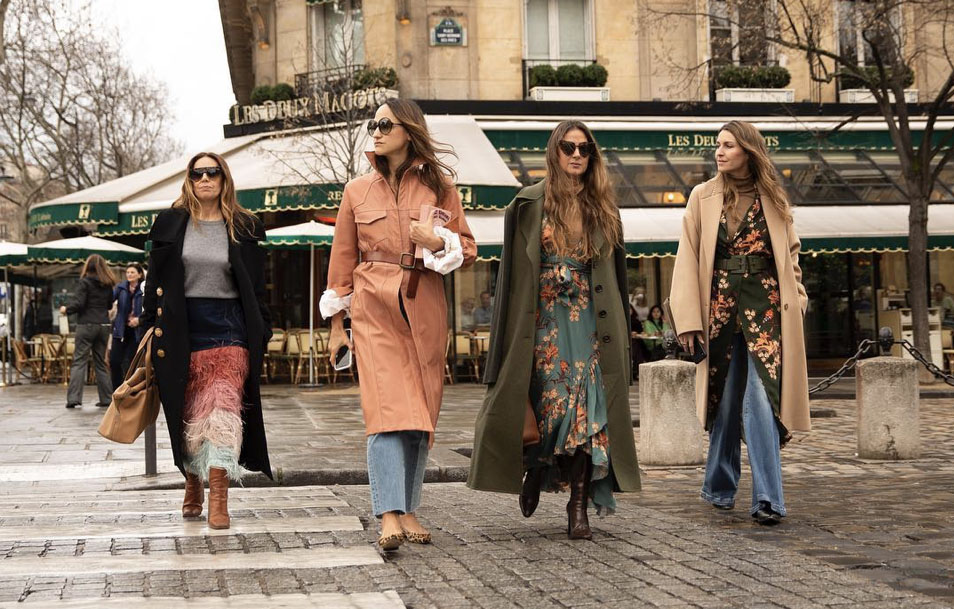
LATINNESS: Many think you were an overnight success, but in reality, there were many years of hard work behind your big break…
JOHANNA: I believe that most things people think happened overnight, have been worked on for a while. Today I was giving a speech to a counsel of women for the Vice President of Colombia with SENA, all of whom were entrepreneurs. While looking for quotes to share, I found one that said something like, everyone thinks most success stories happen overnight, but in reality it takes a lot of time, failures and tears. It is falling and getting back up, and reminding oneself every day: ‘What is my dream? Where am I going? What is my vision?’ It’s ensuring that one’s entire team is aligned with the same vision and same purpose, with the same objective and with the same values. I am always telling my team ‘We do it like this, that’s our way of doing it,’ to make sure the team is focused on the same goal. It’s not an overnight success, it’s sixteen years.
LATINNESS: I read that you interned at MTV Networks Latin America in Miami. So did I!
JOHANNA: I was studying Textile Design at Los Andres. My dad, who is now in heaven, but my mom and him were very protective of my sister and I. They didn’t let me move to New York, because I wanted to go to Parsons, but they didn’t let me go to New York. For them, the idea of me living in New York was like, ‘No!’ So, I studied in Los Andes, and after, during one vacation (we had an apartment in Fort Lauderdale), I saw the Art Institute of Fort Lauderdale, so I told them, ‘Then let me study here!’ I studied at AI of Fort Lauderdale, and there, in a placement office after graduating, I went in and said ‘I want an internship’. At the university they also offered Broadcasting, so I went in and reviewed all the opportunities, but none interested me, plus, what was I going to find interesting in Miami in 1994? So I saw MTV LATINO TAAR, which was Talent and Artist Relations, and said ‘I can do that!’ I was graduating in fashion design, but said ‘who cares’ and applied anyway. Today, the woman who manages Apple for Latin America, she was my first boss! I did a six month internship, and she extended it for one year. I learned how to make the best photocopies, I went to Starbucks, I mean, I was the best of all!
LATINNESS: Talk to us about El Semillero? How did this project come about?
JOHANNA: The Semillero, for me, is the motor and fuel of our studio, the essence is professionalizing creative hands that already have knowledge and skill. So with El Semillero, we normally create alliances with foundations, we’ve worked with several, where they suggest women, or could also include men, we don’t have a preference. Diversity is welcome! How it works is that the foundation creates and selects a group, normally consisting of, more or less, 15 people who already have a basic understanding of sewing, or if it is going to be embroidering, of embroidery. A basic knowledge. They start with a psychosocial accompaniment offered by the foundation. We offer accompaniment on how to start a business, how to raise funds, how to charge, how to create a P&L. Simple things, yet of which, normally, they don’t have any knowledge, and we give 300 hours of training. In our atelier, we always have a professor who is solely dedicated to teaching couture finishings. They learn how to do a French hem, how to backstitch while making a bolero, how to take measurements… They do 300 hours of training, and become specialized in couture finishings. The majority can apply to work with us in our studio, yet many start their own companies with the knowledge they’ve gained, and later, they send me gifts of what they’re creating. Truthfully, it is super gratifying because there are many talented students who have graduated and now work with us, and other talented students start their own businesses and are doing very well. It lasts, more or less, three months. Obviously, we cover their transportation because the majority of the time, they live in communities that are quite far. We offer transportation, meals, training, plus the psychosocial accompaniment by the foundation, which is very important. Many are abused or have suffered eating disorders or depression, but they have the basic knowledge of sewing. It is the only requirement to enter- to know the basics.
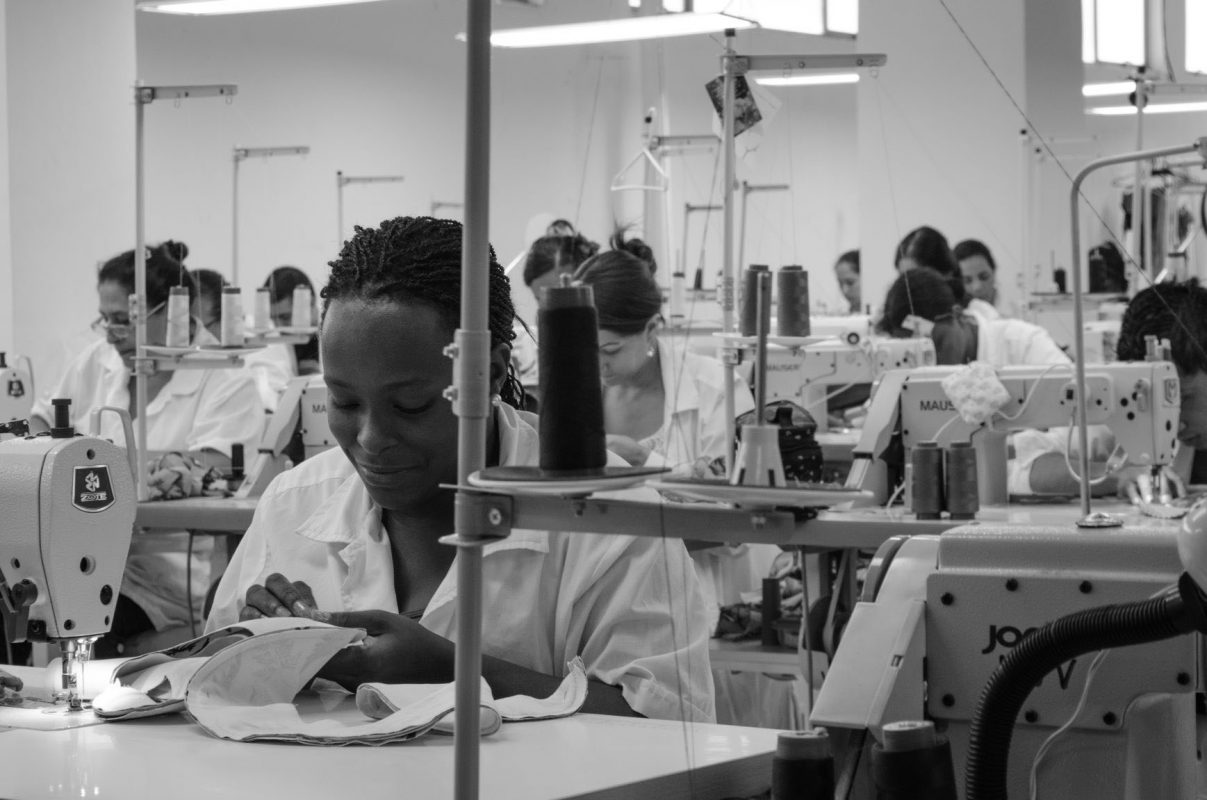
LATINNESS: How long ago did you start this project?
JOHANNA: We started about two long years ago, and I think we’ve had around 100 graduates. This year we introduced the embroidery course because there were a lot of groups interested in learning to embroider, and you can’t even imagine the things they created. Amazing. So we are doing two courses right now, because before we didn’t have enough machines. I had to buy sewing machines for the school since we couldn’t add more students. Right now we can have a module for sewing school and a module for embroidery and crafts.
LATINNESS: How many people do you employ in Cali?
JOHANNA: At this moment we have 360. In the Free Zone, which is where we have our production factory, we have approximately 260, and the rest are in our studio, where we have our main office, which is not only confection, but also the administrative departments of Accounting, Finance, Marketing and Sales.
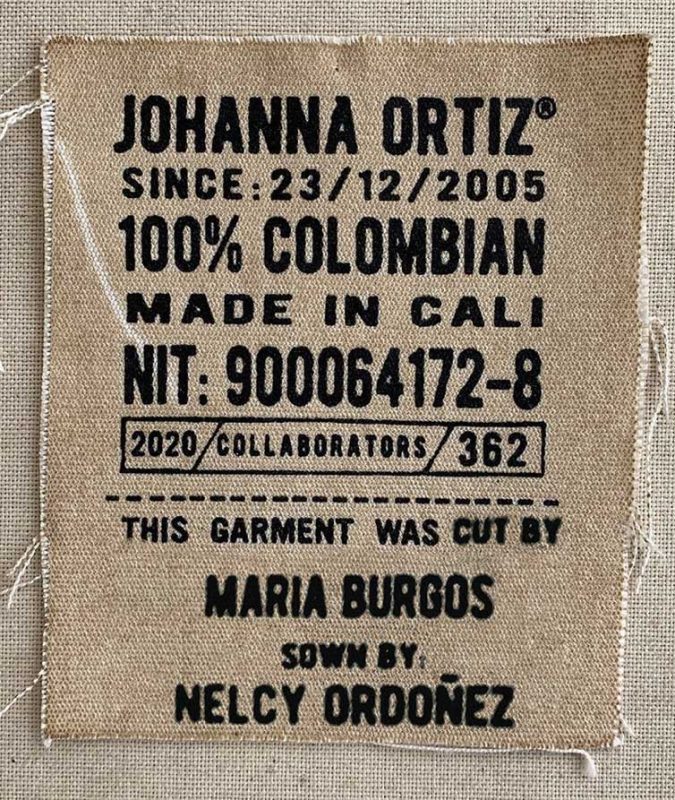

LATINNESS: The majority are women?
JOHANNA: The majority are women. We hired a man for the finance department, and it’s hilarious because we have someone who comes to cut our hair at the office, paint all of our nails, some women come with their dogs, others with their child. So, of course, he doesn’t understand this type of environment! He’s from the finance world and psychorigid about the hallways. It is a matriarchy, we rule!
LATINNESS: There are a lot of changes occurring in the fashion industry as a result of the pandemic, particularly the shift of seasons and collections. What are your thoughts on this? Will we see a change in the pace of Johanna Ortiz collections?
JOHANNA: There is not one correct formula at this moment. For me, it was already very crazy. We were making six collections per year, plus three capsules. It was already a bit over the limit, not only for me, but for my entire team, from Design to Marketing to Sales, and were all a bit saturated. I think the market gets saturated because the markdown becomes almost immediate. It would arrive, and if the production was slightly late in arriving, it would go directly on markdown, and truthfully, the collection did not have a long lifespan. So, yes, we need to slow down the pace, above all, because now we need to make specialty pieces that have a story rather than producing just to produce, and like I said, we have a capacity to make collections, so obviously, we need to get really creative and try to make it work with less collections, but at the same time, I think it’s more an issue of deliveries than of decreasing collections.
I’ll give you an example: we present Pre-Fall in January in Paris, and then Fall-Winter in March in Paris, so from January to March, there are two collections very close to one another. What they are looking to do is combine these two collections, which is the pre-collection and the main collection, make them one, but have different deliveries. It can’t be that in January the buyers travel to Paris, then again in March, and then again in June, and another time in September. Stop those crazy schedules of hectic itineraries with different deliveries. That’s what I think they will do when they say only two collections per year.
Because at the same time, they won’t be able to have the same collection for six months in stores. It is about different deliveries presented in one moment.
LATINNESS: We love how in your latest collections you’ve collaborated with various Colombian accessory designers, using your platform to showcase Colombian talent. How was this initiative born?
JOHANNA: To be honest, I haven’t specialized in accessories until now that I am working on a small accessory collection, but I hadn’t created accessories before. It’s always been that these pieces make the look, they really give it a twist, and it’s a way, also, to offer an opportunity for people to discover the work of other Colombian designers that accompany me at that moment. It’s been super, super cool. I learn so much with these collaborations because they have talent and incredible products, and I just add a small touch, which makes it a collaboration, but the talent is theirs. They can show their pieces and can sell with me in Moda Operandi and Net-A-Porter, or in other retailers where we sell. Obviously, I always tell them, hopefully all the retailers that buy us will pick them up as well, and it has happened. With Verdi it went really well, honestly. I think it was a good collaboration.

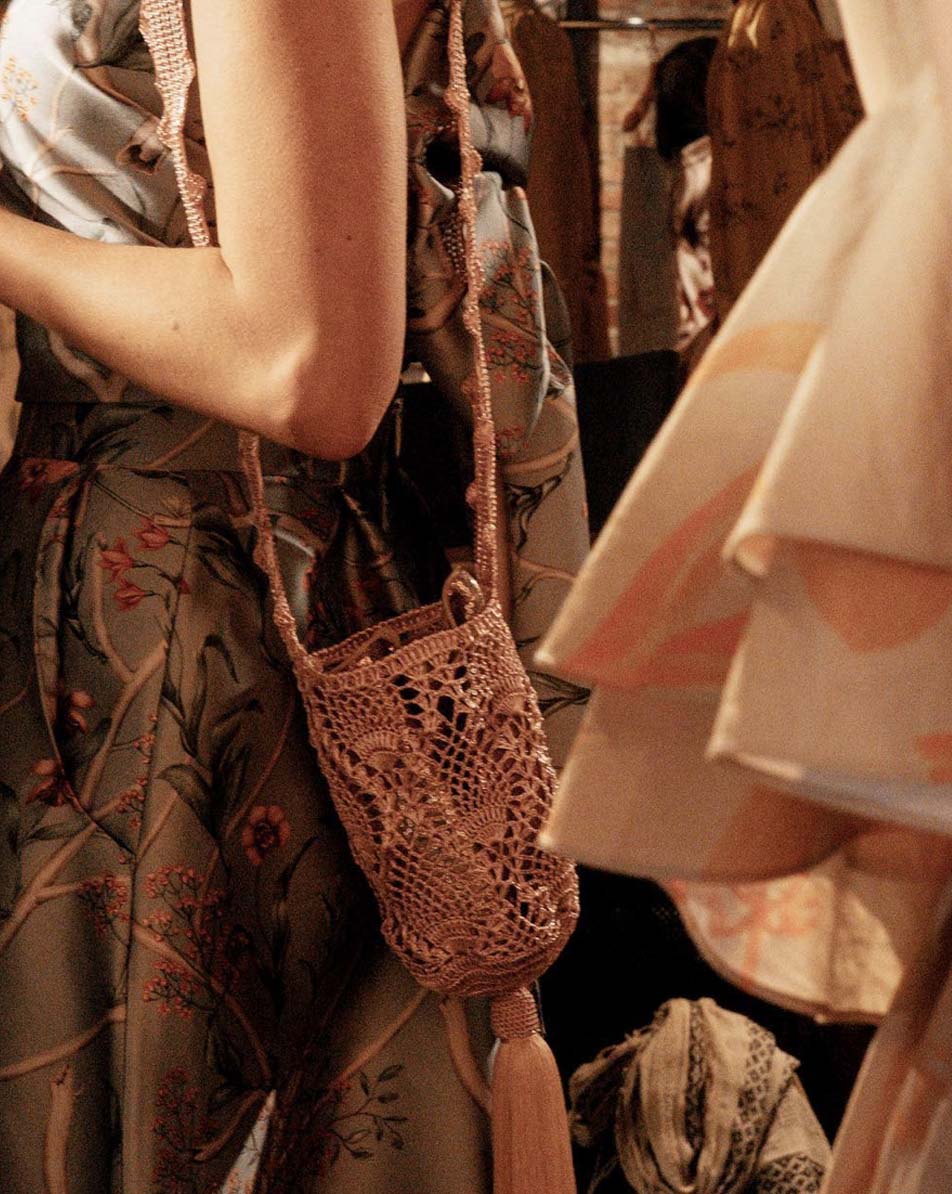
LATINNESS: As a Creative Director and entrepreneur, what is the most important thing you strive to accomplish with Johanna Ortiz, the brand?
JOHANNA: I’ve always believed that clothes can help you- it adds up- with your mood, and I think that it becomes a tool, from my point of view, of what I can give. I am a creative, I am a designer, I want the woman who is wearing a piece created by me to feel divine when she puts it on, and that her husband tells her, ‘Wow, you look amazing!’ And I want her to be the one that dances the most at the party. I want her to remember that dress, and to wear it again in a different way, for a different occasion. When I’m creating, that’s what I’m asking all the time. ‘Where would I wear this dress?’ and ‘Who do I see it on?’ I start to imagine all of you. ‘How would they wear this?’ I think so and so would wear it with these shoes, and she would wear it probably for a wedding, and I would wear it for lunch.’ I always turn it into a story, and personally, for me, it adds a bit of emotion to the day by day. That is what fashion does.
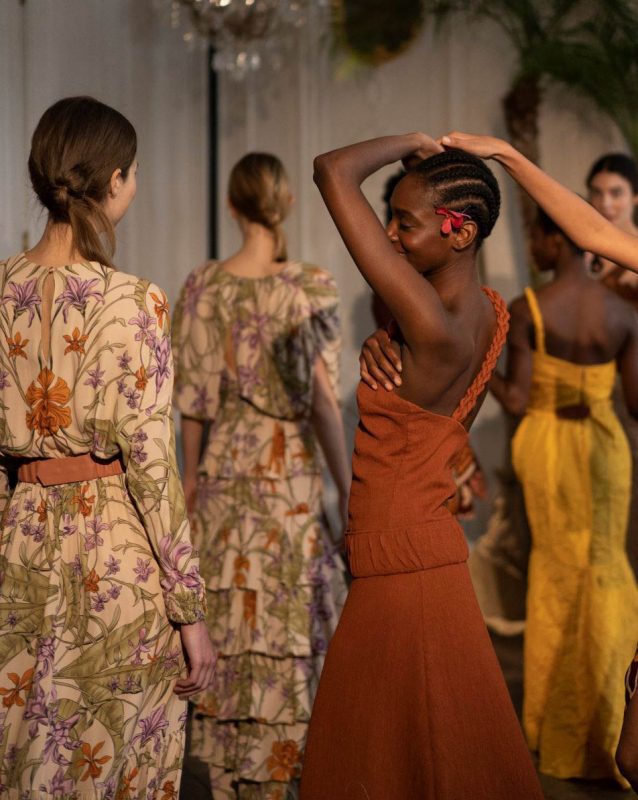
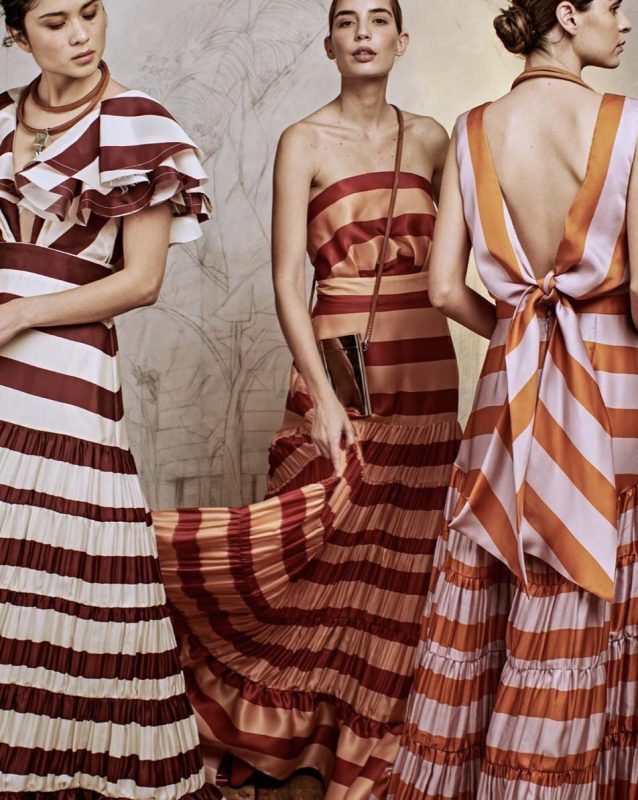
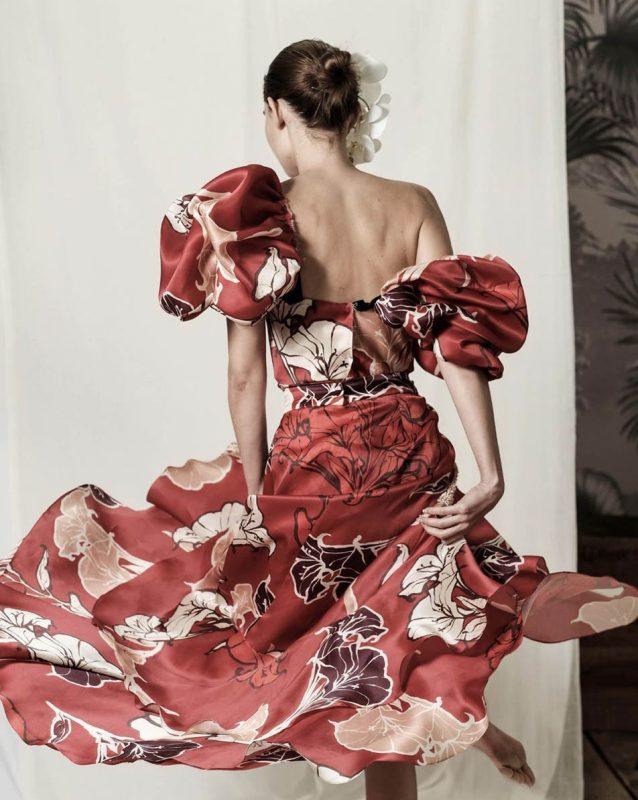

LATINNESS: Is there a creative project you still dream of accomplishing?
JOHANNA: I’m a bit of a frustrated professor, and I think the school, El Semillero, has given me the opportunity to accomplish that. I want to continue building and continue participating in this project.
LATINNESS: What’s one piece of advice you received that has helped in your career?
JOHANNA: One that really stayed with me from the beginning was offered by Lauren Santo Domingo. She told me, ‘Say more no than yes’.
LATINNESS: And have you applied it?
JOHANNA: I’m more of like a yes person (laughs).
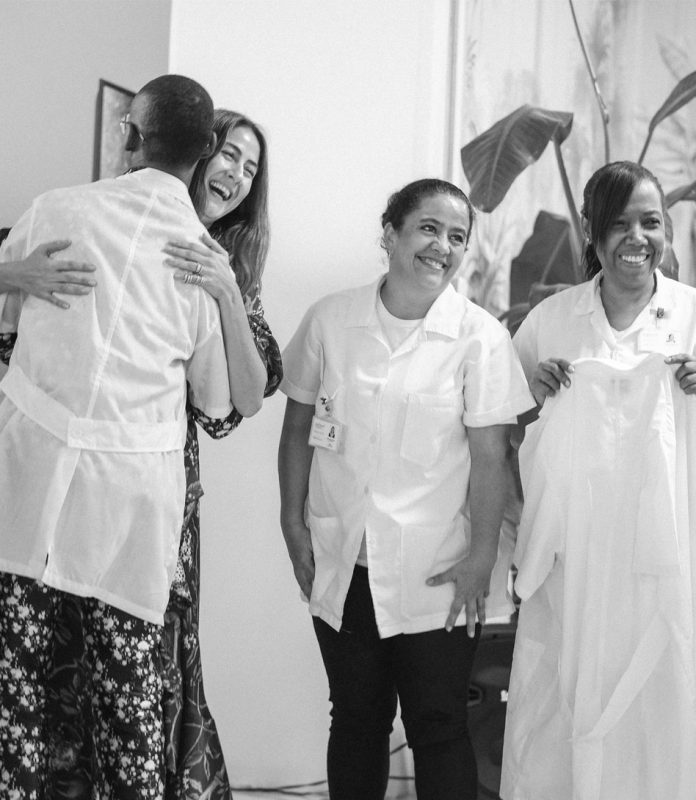
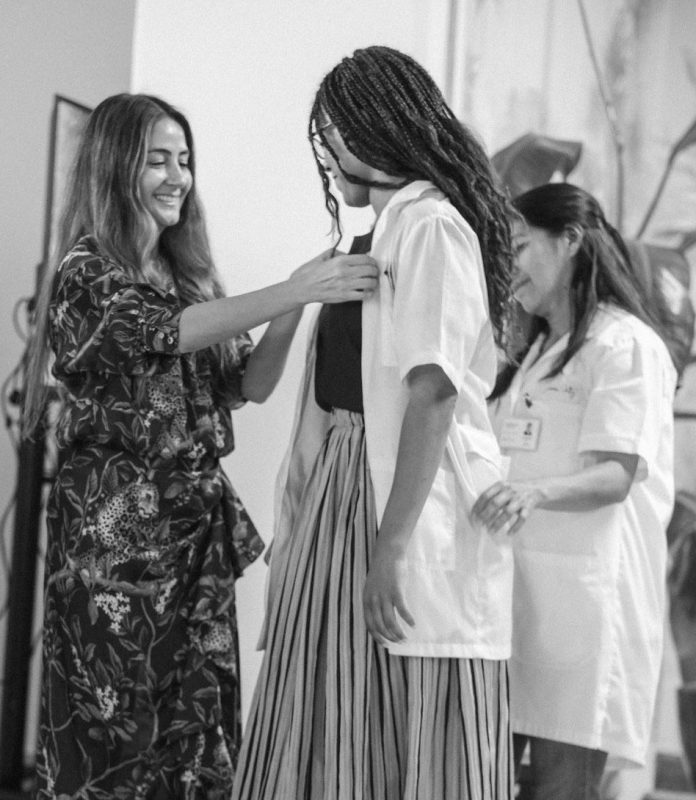
Images: courtesy of Johanna Ortiz

